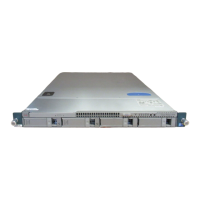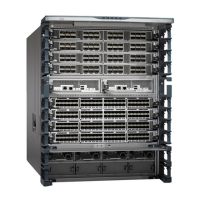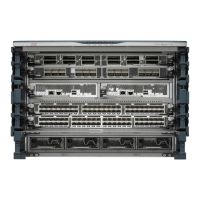© 2013 Cisco and/or its affiliates. All rights reserved. This document is Cisco Public Information. Page 10 of 48
Port Classifications and Virtual Machine Networks
A virtual machine is deployed on a Logical Switch by specifying a specific port classification and a virtual machine
network configured on the Logical Switch. The port classification identifies all the network policy that must be
applied to a virtual machine‘s virtual Ethernet (vEth) interface, and the virtual machine network identifies the
network on which the virtual machine is deployed.
When the Cisco Nexus 1000V is used to manage the virtual access layer on Microsoft Hyper-V servers, the VSM
administrator creates port profiles and network segments. The Microsoft SCVMM administrator uses the port
profile created on the Cisco Nexus 1000V Switch for Microsoft Hyper-V to create a port classification. Similarly, the
administrator uses a network segment created on the VSM to create a virtual machine network on Microsoft
SCVMM.
Port Classifications
A port classification is a container or template of virtual network policy that is applied to a virtual machine’s
Ethernet interface. Microsoft SCVMM uses port classifications to define virtual network policy once and then apply
the same policy to all virtual machines interfaces requiring identical configuration. Port classifications also help
ensure that consistent network policy is applied to all virtual machine Ethernet interfaces. A change made to the
port classification is immediately applied to all interfaces on which the classification is applied.
Microsoft Hyper-V extensible switch architecture allows multiple vendors to provide extensions that enhance the
native switch’s behavior. Each of these extensions can provide network policy to Microsoft SCVMM in the form of a
port profile. A port classification combines network policy from the capture, filter, and forwarding extensions and
the native switch to define all the policy that is to be applied to a virtual machine’s Ethernet interface (Figure 6).
Figure 6. Port Classification: Collection of Port Profiles
Because the Cisco Nexus 1000V implements a forwarding extension and can perform capture and filter functions,
in practice a port classification on a Cisco Nexus 1000V Logical Switch contains only a forwarding port profile.

